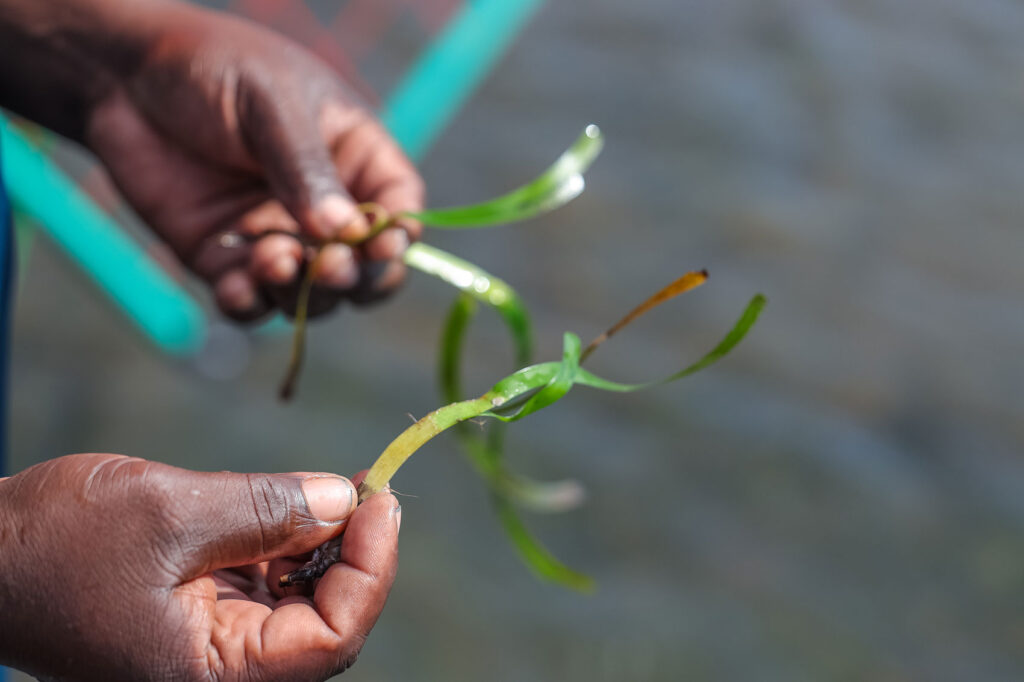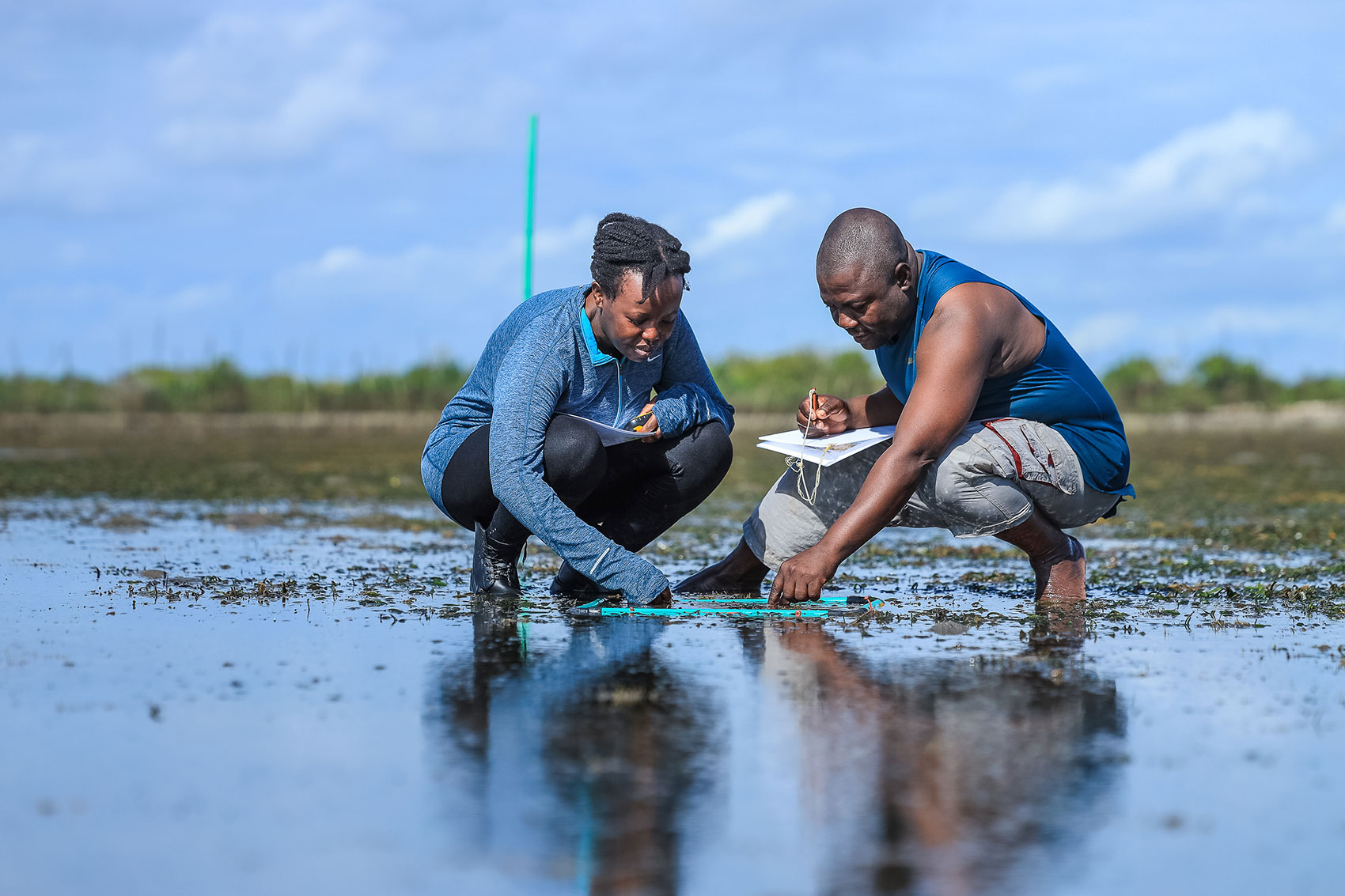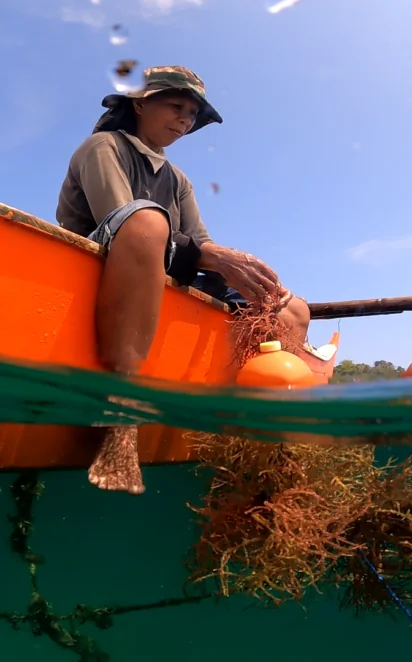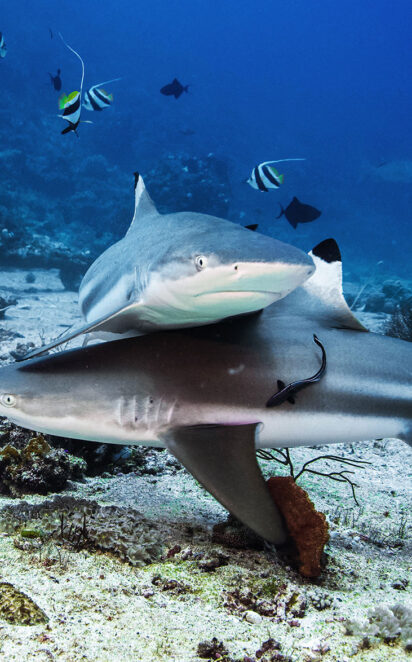Vanga Blue Forest – Bundling Biodiversity and Blue Carbon Credits
Project Lead: The Association for Coastal Ecosystem Services (ACES)
Supporting Partners: Vanga Blue Forest Community-Based Organisation; Kenya Marine and Fisheries Research Institute; Edinburgh Napier University
Support: The UK’s Blue Planet Fund
Location: Kenya
Project Timeline: Ongoing (2024-2025)
Summary
The Association for Coastal Ecosystem Services (ACES) aims to co-generate biodiversity and carbon credits for seagrass ecosystems in the Vanga Blue Forest, Kenya.
Seagrass grows around the world, often adjacent to mangrove forests. In these locations, there is an opportunity to develop multiple payment for ecosystem services through a ‘bundled’ credit approach – contributing to longer-term, more secure, and sustainable funding stream for seagrass conservation. In this context, ACES is implementing biodiversity credits for seagrass in the Vanga Blue Forest, which will be offered in a ‘bundled’ form to decrease dependence on carbon credits.
This holistic approach to ecosystem services highlights the financial value of biodiversity both locally and internationally and aims to bring increased co-benefits for the local community.
Projected Impact
With ORRAA’s support through the UK’s Blue Planet Fund, this project aims to:
– Support 8,736 people
– Protect or conserve 350 hectares
– Leverage USD $60,000 of investment
Challenge
There are multiple challenges to consider for the inclusion of seagrass in carbon projects1 including financial, technical and political barriers to carbon calculations, along with monitoring and tenure ship, particularly in a community context. This project aims to decrease Vanga Blue Forest’s reliance on financing through carbon credits. Biodiversity credits offer a new but under-developed solution to financing nature conservation, particularly in contexts where carbon financing is otherwise inaccessible. They also aim to improve the rate of poverty in the local area (which is the primary driver of ecosystem degradation).
Solution
By ‘bundling’ carbon credits with biodiversity credits issued under Plan Vivo’s biodiversity standard (PV Nature), Vanga Blue Forest will develop a seagrass meadows crediting framework, demonstrating a holistic approach to nature conservation. This project will enhance biodiversity and local resilience through a framework that delivers community benefits, builds local institutions, and act as a demonstration site for other blue carbon projects to expand their scope.
Scaling and Next Steps
The project will include several steps. First, ACES will establish a sustainable funding mechanism for seagrass conservation in Vanga Bay through biodiversity financing; which will act as a demonstration site as the first project globally to accredit a marine ecosystem under a biodiversity crediting standard. Afterward, efforts will demonstrate how carbon and biodiversity credits can be co-generated in a marine context to increase the viability of accredited blue ecosystem projects worldwide.
This will help the ‘blue carbon’ market diversify away from reliance on carbon credits and demonstrate how biodiversity conservation and enhancement can be used to leverage sustainable financing for communities.





